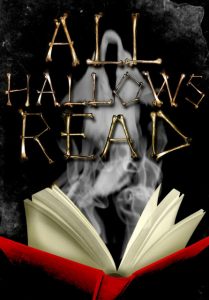 It’s getting close to the official All Hallow’s Read and while I can’t wait to see what Arabella has cooked up for Monday, we’ve still got one Saturday left in our month-long celebration. I’d like to spend it talking about diversity in what is often considered a white man’s genre: horror. Many will automatically think of Stephen King, Dean Koontz or even more classic authors like M.R. James and Edgar Allan Poe when they think of people creating horror stories. While they have produced many wonderful horror stories that have terrified people through the years and are read with good reason, they are not the only voices in horror.
It’s getting close to the official All Hallow’s Read and while I can’t wait to see what Arabella has cooked up for Monday, we’ve still got one Saturday left in our month-long celebration. I’d like to spend it talking about diversity in what is often considered a white man’s genre: horror. Many will automatically think of Stephen King, Dean Koontz or even more classic authors like M.R. James and Edgar Allan Poe when they think of people creating horror stories. While they have produced many wonderful horror stories that have terrified people through the years and are read with good reason, they are not the only voices in horror.
In fact, amidst a predominantly white publishing industry, authors, readers and interest groups (such as the fantastic “We Need Diverse Books“) are starting to take a stand to encourage more diverse books among horror and all types of literature. Blog favorite Book Riot has spoken several times on making it a point to recommend and speak about diverse books on their site and in their podcasts. I myself am working to have more voices of all types in my reading and when I looked back at what I’ve been reading this month (mostly horror and ghost stories in my own celebration of All Hallows Read) I noticed it was primarily white male voices.
I also noticed that while there are virtually infinite ways to scare people, many of these books fall into similar tropes. With that in mind, I thought I would take a look at some other voices in horror, to look at the possibility of other ways to be scared and to also see what are some of the commonalities of what is fundamentally scary as part of the human experience, regardless of culture. As Haruki Murakami said: “If you only read the books that everyone else is reading, you can only think what everyone else is thinking.” So here are some books that will help you think outside the box of typical horror:
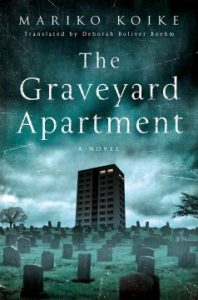 The Graveyard Apartment by Mariko Koike
The Graveyard Apartment by Mariko Koike
Koike is a hugely popular author in Japan working primarily in horror and detective fiction. In this newly-translated work from 1986, in some circles considered her masterpiece, a family moves into an apartment building next to a graveyard where strange things begin to happen. The potential evil lurking in the young family’s new home seems to feed off of a dark secret they’re harboring and the psychological suspense builds as they explore the building’s spaces and its past. This book is purported to make basements even creepier, so sign me up!
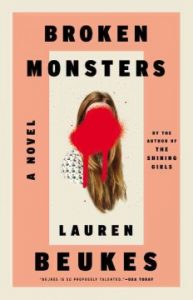 Broken Monsters by Lauren Beukes
Broken Monsters by Lauren Beukes
When I went searching for more diverse horror reads, I found this rec from Book Riot contributor Jenn Northington. Written with a diverse cast of characters, Northington had this to say about Broken Monsters: “Whether you’re a veteran horror reader or a hide-under-the-blankets-put-the-book-in-the-freezer newbie (I am the latter), Beukes has something for you. Her books are both terrifying and wildly imaginative, and so so hard to put down.” I’m so there. This may very well be the next book on my to-read list (All Hallows Read or not!) with a recommendation like that.
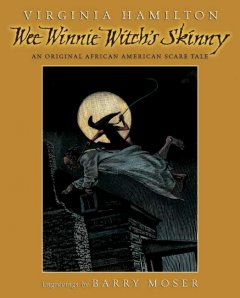 Wee Winnie Witch’s Skinny by Virginia Hamilton
Wee Winnie Witch’s Skinny by Virginia Hamilton
Working with her extensive knowledge of African-American folklore, Hamilton manages to make a children’s book truly scary for any who reads it. Uncle Big Anthony and James Lee have been cursed by Wee Winnie Witch who rides them like a broom throughout the night. Mamma Granny knows what to do to break the curse, however, in a clever twist that rivals any in the Grimm’s fairy tales.
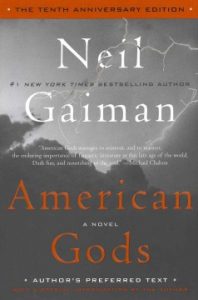 American Gods by Neil Gaiman
American Gods by Neil Gaiman
I know what you’re thinking: Lady Pole, while we are well aware of your love of Neil Gaiman, he is, in fact, a white, male author. Doesn’t this defeat the purpose of your post? Your point is certainly fair, but I’m including this book because Gaiman himself has spoken up and acted on (through some of the collections he’s edited) about diversity in literature. He has vehemently worked to ensure that the main character of this book, Shadow , does not succumb to Hollywood whitewashing and is striving to keep the cultural diversity of his book in the upcoming Starz adaptation. I’ve included this book because it is a horror book about the immigrant experience and because Gaiman does a pretty decent job of writing outside of his own cultural borders, which not every author is brave enough to attempt.
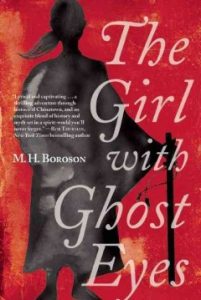 The Girl with the Ghost Eyes by M. H. Boroson
The Girl with the Ghost Eyes by M. H. Boroson
Li-lin is cursed with”yin eyes” the ability to see ghosts in 1800’s San Francisco Chinatown. She is the daughter of a Daoshi excorcist who becomes cursed by a powerful sorcerer. It takes Li-lins powers of sight to defeat the curse all the while struggling against the demands of being a dutiful daughter and the stigmas of being a widow. This book got a starred review from Publisher’s Weekly and is described by the publisher as having: “…a rich and inventive historical setting, nonstop martial arts action, authentic Chinese magic, and bizarre monsters from Asian folklore…” I’ll never know how this didn’t end up on my radar sooner.
Diverse books are important for so many reasons. Readers need to see a portion of themselves represented on the page, regardless of who they are or where they come from. Books are one of the easiest and cheapest ways to broaden our horizons. If you’re already planning on reading something for All Hallows Read, why not see if you can be scared in a way that perhaps has never creeped you out before? If none of these books whet your whistle, you can try this great list from Goodreads which includes not just cultural, but gender and ability diversity as well. Till next week, dear readers, let’s try to break some boundaries with our reading. You’ll never know what new favorite you can discover.
